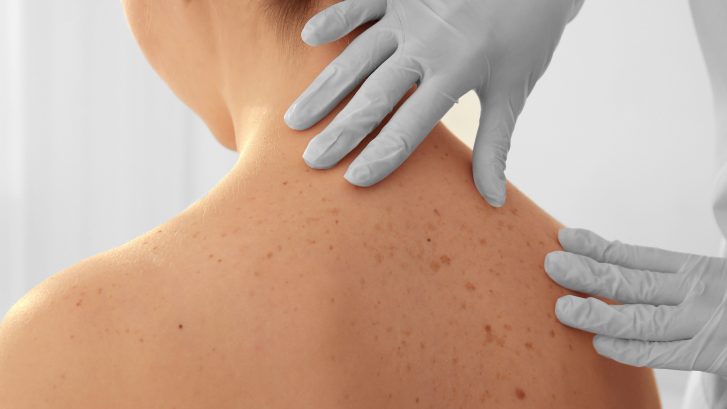
Early detection can save lives. This is especially true when it comes to skin cancer. You should check yourself from head to toe at home at least once a month. For a formal check, you should see your skin cancer doctor in Maryland. Planning a skin cancer screening? Here’s what you need to know.
What Exactly Is a Skin Cancer Screening?
It’s an important time you set aside to see your skin cancer doctor so you can be checked for moles, birthmarks, or any suspicious bump or lesion that has changed in size, shape, or texture.
It should be noted that skin cancer screenings are not used to diagnose cancer. They are only a method used to detect signs of cancer.
Why Should I Have a Skin Cancer Screening?
As mentioned, early detection is the key to successful treatment. Also, if you have certain risk factors that make it more likely you could develop skin cancer you should be checked regularly.
These risk factors include light skin, blonde or red hair, light-colored eyes, skin that easily burns/freckles, a family history of skin cancer, frequent exposure to the sun or tanning beds, or a large number of moles. If you’ve previously had skin cancer, be sure to keep all of your follow-up appointments with a skin cancer doctor.
Isn’t a Self-Check for Skin Cancer at Home Enough?
It isn’t recommended you use that as your only method to detect potential cancer. Your skin cancer doctor in Maryland is a specialist with years of knowledge and experience. You might spot obvious changes in a mole, but you should rely on your skin cancer doctor to do a more thorough check than you can do alone and to find less obvious signs.
How Do I Perform an At-Home Skin Cancer Screening?
There are several indications of skin cancer you should be on the lookout for. Any change to an existing spot or mole, any mark on your skin that becomes bloody or crusty, a mole/bump that is painful, and a sore that doesn’t heal can all be signs of skin cancer.
You should also see your skin doctor if you notice bumps that are shiny pink, red, white, or translucent. Moles with irregular borders that bleed can also be a sign of skin cancer.
I’ve Heard of the Acronym “ABCDE.” What Does That Stand For?
ABCDE is an easy way to remember what to look for during a skin cancer screening. Your healthcare provider will use it during exams, and if you check at home you should too. The acronym stands for:
- Asymmetry: Mole or bump with an odd shape and sides that do not match
- Border: Ragged or irregular border
- Color: Uneven color to any bump, mole, or lesion
- Diameter: Spot larger than the size of a pea
- Evolving: Changes in shape, size, texture, and/or color
If you notice any of the signs, it’s important you see your skin cancer doctor as soon as possible.
I’ve Made My Appointment. What Should I Expect During a Skin Cancer Screening?
First, congratulations! Be proud of yourself for taking this important step in your healthcare. If it’s your first skin cancer screening, it’s normal to be nervous. But, there’s no need to be, so try to relax. It’s not at all painful and lasts only around 15 to 20 minutes.
During your skin cancer screening, you’ll be asked to undress and put on a gown. Your skin cancer doctor will perform a head-to-toe exam. This exam will include your scalp, ears, toe, buttocks, and genitals. Please don’t feel embarrassed, and focus on the importance of being checked.
How Should I Prepare for a Skin Cancer Screening?
There isn’t a lot you need to do to prepare for your skin cancer screening. Make sure you arrive with clean skin. This means no makeup. You also should remove all nail polish before your appointment and wear your hair loosely.
If you’ve noticed a suspicious mole, bump, or lesion at home, then you’ve been paying attention and monitoring changes. You’ll need to share this information with your skin cancer doctor during your screening.
What Happens if My Skin Cancer Doctors Suspects I Have Skin Cancer?
If your doctor finds anything suspicious, the usual route is removal of the skin. This is called a biopsy. A biopsy can be done in one of several ways: shave, punch, excisional, or incisional. Your doctor will use the method best suited for your specific situation.
In some cases, a biopsy can remove all of cancer and no further treatment is needed. If you do need further treatment, your skin cancer doctor will discuss all of your options with you so the right course of action can be planned to set you on the path to successful treatment and optimal wellness.
Where Should I Go if I Want the Best Skin Cancer Doctor in Maryland?
Under the direction of Dr. George K. Verghese, our team believes you deserve only the highest quality comprehensive, personalized care available. That’s why we offer free skin cancer screenings to our patients.
Held on the first Wednesday of every month, our skin cancer screenings are not only your opportunity for a thorough exam but, it’s also a valuable teaching tool so you know what to look for at home.
To take control of your health, schedule your free skin cancer screening today by calling us at 301-396-3401!
